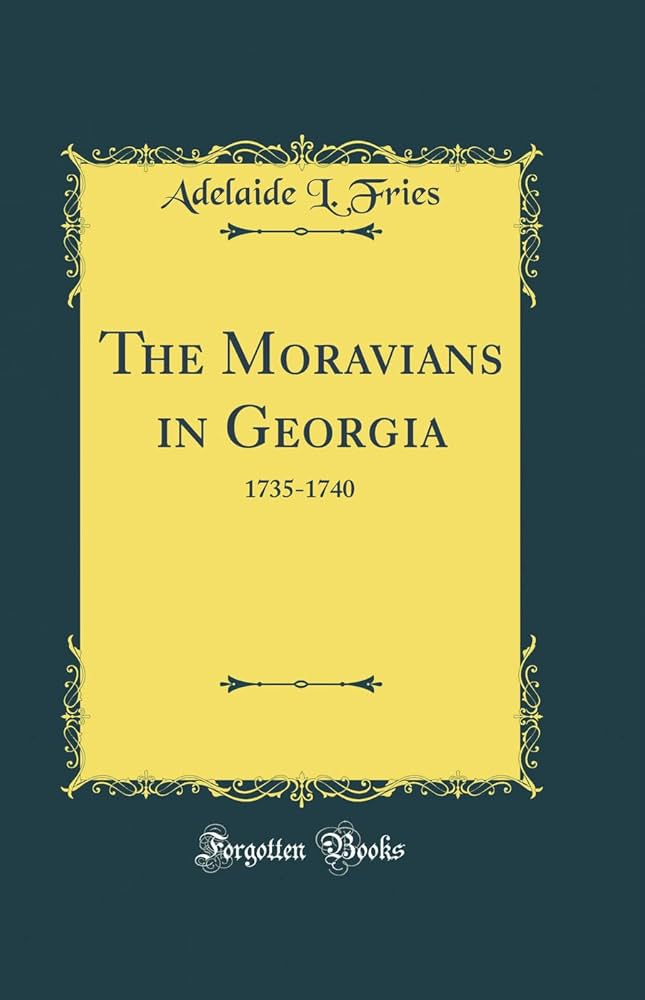Chapter VII — Conclusion
byChapter VII — Conclusion brings a contemplative end to the Moravians’ journey in Georgia, tracing their persistence through turbulent decades. By the time John Hagen arrived in 1740, much of the initial momentum had dissipated. The Cherokee mission he intended to join had already been abandoned. Finding the terrain and political climate inhospitable, Hagen opted to remain in Savannah, where his health and the impracticality of reaching the native population influenced his decision. Instead, he turned to gardening and pastoral work among the local German-speaking residents. His efforts to foster a congregation were deeply affected by theological disputes, particularly with George Whitefield, whose rigid stance on predestination clashed with Hagen’s inclusive faith. Ultimately rejected by Whitefield, Hagen found support among more sympathetic allies, notably John Brownfield and settlers in nearby communities, where his message found more resonance.
The chapter then details a proposal by General Oglethorpe in 1746, encouraging the Moravians to restart their mission farther upriver. However, the plan faltered before any progress could be made, symbolic of the recurring pattern of optimism followed by inaction. Nearly three decades later, in 1774, a fresh attempt to revive the mission took shape with Ludwig Mueller and John George Wagner heading to Georgia to minister to enslaved individuals. Though well-intentioned, this mission faced relentless adversity. The harsh southern climate took its toll on their health, and fever was a constant threat. As the American Revolution unfolded, the instability of war eventually forced the Moravian missionaries to retreat. Their departure closed another chapter in an already fractured narrative, one where faith and ambition were repeatedly tested by external forces beyond their control.
The narrative then shifts to the fate of the physical remnants of the Moravian presence—most notably their land in Savannah. Originally granted in the 1730s to Spangenberg and Nitschmann, this property was intended as both a sanctuary and base for mission work. Legal disputes and wartime disruptions stalled these plans. For decades, the land remained a point of contention, bound in legalities that reflected the larger issues faced by religious minorities trying to maintain a foothold in a colonial society. By the 1800s, claims to this property remained unresolved, signaling how the legacy of the Moravians was as much about what was lost or left undone as what was achieved. The departures, deaths, and changes in leadership during this period underline the fragile nature of such an endeavor, where the line between perseverance and defeat often blurred.
Yet within these setbacks, the Moravians left a spiritual imprint that outlasted their physical presence. The chapter carefully lists names, dates, and notes of those who arrived, left, or passed away, forming a kind of roll call of quiet dedication. These records serve as evidence that while permanence eluded them, their mission was not without meaning. Many of their teachings and principles found homes elsewhere in the colonies, influencing future religious and educational movements. In a world marked by colonial expansion and religious competition, the Moravians stood apart for their communal values, emphasis on humility, and desire to live in peace with those they served—even when their efforts failed to flourish on Georgian soil.
The closing reflections invite the reader to view the Moravian story not as a tale of failure, but one of sincere struggle and remarkable conviction. Their repeated efforts, even in the face of political opposition, disease, and cultural resistance, reflect a unique spiritual resilience. Unlike some colonial missions that exploited their settings for material gain, the Moravians sought harmony, education, and faithfulness. Though the City of Savannah did not become the thriving mission center they hoped for, their example still serves as a model of service motivated not by conquest, but compassion. Through every setback, their story underscores the belief that not all success is seen in numbers, but often in integrity and purpose maintained despite hardship.
In the end, the Moravian mission in Georgia encapsulates the tension between vision and reality. They arrived with high hopes of outreach and community but encountered resistance both natural and human. Their journey is a reminder that early American history was shaped not just by battles and founding fathers, but by quiet groups like the Moravians—persistent, faithful, and often unsung. While the land may have changed hands and their settlements faded, the Moravians’ enduring spirit shaped future generations who shared in their devotion to peaceful purpose and spiritual discipline.

